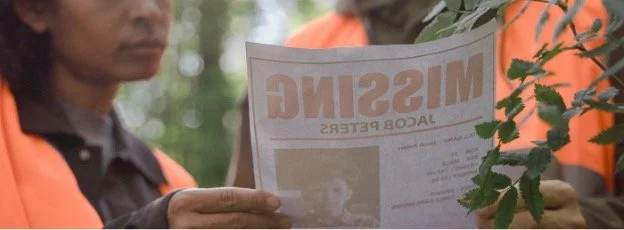Scope, Risk Factors, and Investigative Barriers
Framing the Problem
Each year, approximately 600,000 individuals are reported missing in the United States; in Canada, that number ranges between 70,000 and 80,000. Most are found quickly, but a small percentage remain missing–– roughly 6,000 in the U.S. and 1,000 in Canada annually. These numbers likely underestimate the true scale of the issue. Not all disappearances are reported to police, and data systems often lack consistency or coordination.
Certain communities face higher risks. In the United States, Black individuals are overrepresented in missing persons cases. In Canada, Indigenous women and girls are disproportionately affected. Youth make up a large portion of missing persons in both countries, especially teenage girls categorized as runaways.
Common risk factors include:
• Mental health challenges
• Substance use disorders
• Domestic violence
• Housing instability or homelessness
• Involvement in the child welfare or foster care system
• Identification as LGBTQ+
These vulnerabilities overlap with those of sex trafficking victims, highlighting the importance of concentrating services on runaway youth, unhoused individuals, and marginalized women.
Sex Trafficking and Missing Persons
Identifying missing persons who are victims of sex trafficking is complex. Systemic, behavioral, and legal barriers make these cases difficult to detect, investigate, and resolve. Common challenges include:
1. Victims Don’t Self-Identify
Many trafficking victims do not see themselves as victims, particularly when psychological manipulation or “Romeo pimp” tactics are involved.
2. Coercion and Fear Prevent Disclosure
Threats of violence, fear of arrest, and mistrust of law enforcement often prevent keep many victims from seeking help - even when opportunities arise.
3. Frequent Relocation and Isolation
Traffickers often move victims between cities, states, or provinces, complicating efforts to track and identify them. Victims often lack ID, a stable address, or access to communication.
4. Missing Person Reports May Not Be Filed
Some victims are estranged from family or involved in state care. Disappearances may go unreported or be treated as routine runaways.
5. Fragmented Databases and Poor Information Sharing
Investigative data is often spread across multiple federal, state and local systems, and coordination across jurisdictions may be inconsistent.
6. Bias and Case Deprioritization
Cases involving runaways, individuals in poverty, or known sex workers are sometimes deprioritized. Media coverage and law enforcement attention are often lacking for marginalized groups.
7. Trauma Complicates Disclosure
Victims frequently experience complex trauma, resulting in memory gaps, inconsistencies, or mistrust of authorities - factors that may be misinterpreted as dishonesty or noncooperation.
8. Online Exploitation Is Difficult to Track
The sheer volume of online data and the speed at which evidence can disappear complicates tracking efforts. Many platforms also fail to preserve user data, making it difficult to connect the dots and identify victims. Tools like Traffic Jam are designed to help investigators navigate these challenges, identifying potential leads and tracking digital footprints that would otherwise remain hidden.
9. Legal Misclassification
Survivors may be arrested for prostitution or misclassified as voluntary runaways. Investigators can miss signs of exploitation and inadvertently overlook the underlying human trafficking crime. This can also foster mistrust between survivors and law enforcement. Victims are sometimes charged with offenses like prostitution, particularly where trauma-informed practices are lacking. Cases may be mislabeled as voluntary runaways, missing key trafficking indicators.
10. Resource Gaps in Specialized Units
Many jurisdictions lack dedicated human trafficking or missing persons units. Even well-resourced departments may struggle with caseload volume and limited access to specialized tools or training.
Moving Forward
Addressing these challenges requires a coordinated, trauma-informed, and data-driven approach. Key strategies include:
· Enhanced training to identify trafficking red flags
· Improved data sharing and case coordination across jurisdictions
· Decriminalization of trafficking survivors
· Stronger oversight in child welfare systems
In the coming weeks, we’ll explore the intersection of missing persons and sex trafficking in greater detail and share how tools like Traffic Jam can assist investigators in identifying victims across online platforms commonly used to advertise trafficked victims.
For more information about Traffic Jam or to schedule a demo, please contact: info@marinusanalytics.com
The information in this blog comes from a variety of reports and studies. For more detailed information, see the full citations below.
National Missing and Unidentified Persons System (NamUs). (n.d.). National Missing and Unidentified Persons Database. U.S. Department of Justice. .
Royal Canadian Mounted Police (RCMP). (n.d.). Missing Persons. Government of Canada. .
Polaris Project: Polaris Project. (2020). Trafficking Victims Protection Act Report: Key Findings on Trafficking in the U.S.. .
U.S. Department of Justice, Office for Victims of Crime: U.S. Department of Justice, Office for Victims of Crime. (2017). Human Trafficking Victim Assistance. .
National Human Trafficking Hotline: National Human Trafficking Hotline. (2019). Annual Report.
National Center for Missing & Exploited Children (NCMEC): National Center for Missing & Exploited Children. (2020). NCMEC’s Annual Report. .
U.S. Government Accountability Office (GAO): GAO. (2018). Human Trafficking: Agencies Can Improve Coordination and Data Sharing. .
Polaris Project: Polaris Project. (2020). The Typology of Modern Slavery: Defining Sex and Labor Trafficking in the United States. .
National Center for Victims of Crime: National Center for Victims of Crime. (2018). Trauma-Informed Care for Victims of Human Trafficking.
U.S. Department of Justice, Office for Victims of Crime: U.S. Department of Justice, Office for Victims of Crime. (2020). Combating Human Trafficking in the Digital Age. .
Human Rights Watch: Human Rights Watch. (2018). When I Was Sold: The Victimization of Children in the U.S. Prostitution System. .
National Human Trafficking Hotline: National Human Trafficking Hotline. (2020). Human Trafficking Law Enforcement Response. .


